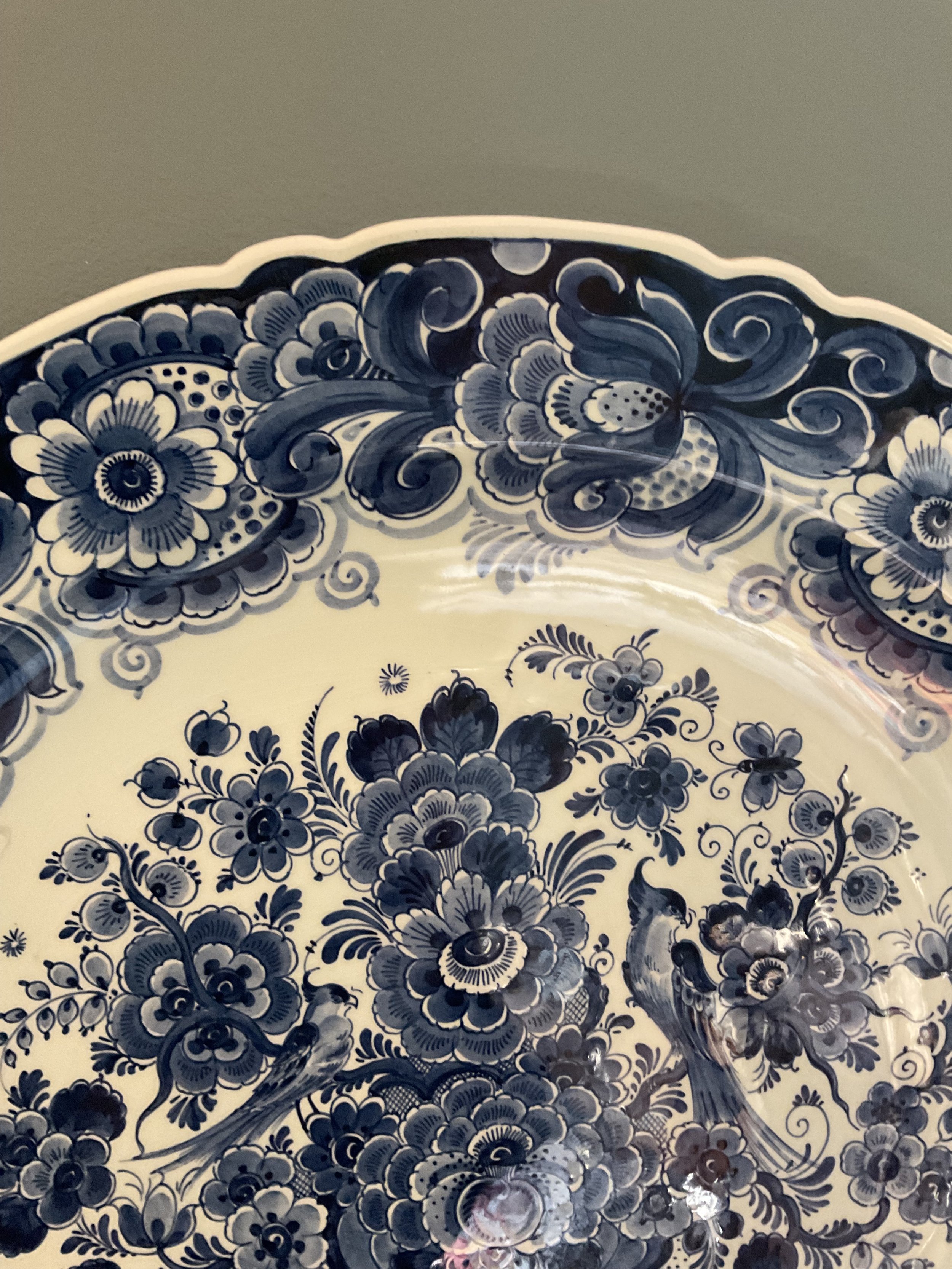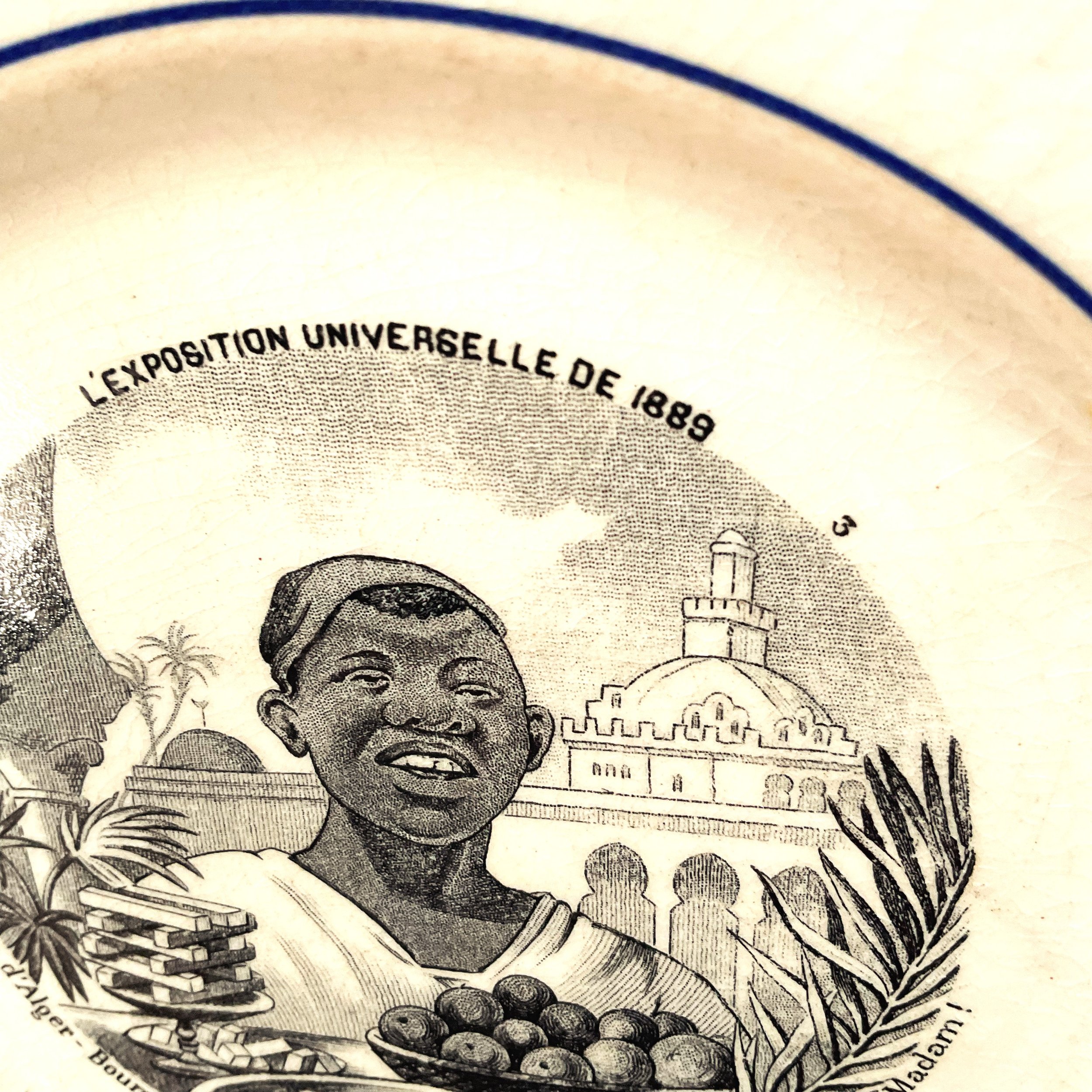 Image 1 of 8
Image 1 of 8

 Image 2 of 8
Image 2 of 8

 Image 3 of 8
Image 3 of 8

 Image 4 of 8
Image 4 of 8

 Image 5 of 8
Image 5 of 8

 Image 6 of 8
Image 6 of 8

 Image 7 of 8
Image 7 of 8

 Image 8 of 8
Image 8 of 8









Limoges Vieux Paris Porcelain And Bronze Mounted Tazza
The term ‘tazza’ refers to a shallow vase on a pedestal. This elegant oval shaped tazza has been made from white porcelain. It has been beautifully decorated with a floral pattern. On one side there is a cartouche decorated with coloured blooms on a gold ground background. Surrounding this, there is a floral .garland .On the reverse side, there is a floral bunch. The handles are made from gilt bronze and feature griffins in a majestic pose. The vase stands on a gilt bronze base. This tazza would have been designed as a purely decorative object made for dispalying fruit or sweetmeats. On the underside there are Vieux Paris backstamps.
Limoges porcelain is a hard paste porcelain produced by factories in and around Limoges, France. The production of Limoges porcelain began in the late 18th century. By about 1830, Limoges had replaced Paris as the main centre for private porcelain factories. Limoges has retained this position to the present day. Revered for its beauty and craftsmanship, kaolin Limoges clay is translucent, durable, non-porous and pure white. Kaolin (also known as China clay) is a hydrated aluminium silicate crystalline mineral formed over many millions of years. European efforts to discover the secrets of making hard paste porcelain had lasted for centuries. It was accidently discovered around 1776 at Saint- Yrieix-la-Perche, close to Limoges. A chemist’s wife, who was out foraging for ingredients, thought the white substance would make a good replacement for soap, which could be used to wash and bleach linen. Some well known makers of Limoges include Bernardaud, J.L. Coquet, Raynaud, Haviland, Jaune de Chrome and Albert Pinto.
This tazza measures approximately 24 cms in height, 28 cms in length and 14 cms in width. It is in excellent condition.
The term ‘tazza’ refers to a shallow vase on a pedestal. This elegant oval shaped tazza has been made from white porcelain. It has been beautifully decorated with a floral pattern. On one side there is a cartouche decorated with coloured blooms on a gold ground background. Surrounding this, there is a floral .garland .On the reverse side, there is a floral bunch. The handles are made from gilt bronze and feature griffins in a majestic pose. The vase stands on a gilt bronze base. This tazza would have been designed as a purely decorative object made for dispalying fruit or sweetmeats. On the underside there are Vieux Paris backstamps.
Limoges porcelain is a hard paste porcelain produced by factories in and around Limoges, France. The production of Limoges porcelain began in the late 18th century. By about 1830, Limoges had replaced Paris as the main centre for private porcelain factories. Limoges has retained this position to the present day. Revered for its beauty and craftsmanship, kaolin Limoges clay is translucent, durable, non-porous and pure white. Kaolin (also known as China clay) is a hydrated aluminium silicate crystalline mineral formed over many millions of years. European efforts to discover the secrets of making hard paste porcelain had lasted for centuries. It was accidently discovered around 1776 at Saint- Yrieix-la-Perche, close to Limoges. A chemist’s wife, who was out foraging for ingredients, thought the white substance would make a good replacement for soap, which could be used to wash and bleach linen. Some well known makers of Limoges include Bernardaud, J.L. Coquet, Raynaud, Haviland, Jaune de Chrome and Albert Pinto.
This tazza measures approximately 24 cms in height, 28 cms in length and 14 cms in width. It is in excellent condition.
The term ‘tazza’ refers to a shallow vase on a pedestal. This elegant oval shaped tazza has been made from white porcelain. It has been beautifully decorated with a floral pattern. On one side there is a cartouche decorated with coloured blooms on a gold ground background. Surrounding this, there is a floral .garland .On the reverse side, there is a floral bunch. The handles are made from gilt bronze and feature griffins in a majestic pose. The vase stands on a gilt bronze base. This tazza would have been designed as a purely decorative object made for dispalying fruit or sweetmeats. On the underside there are Vieux Paris backstamps.
Limoges porcelain is a hard paste porcelain produced by factories in and around Limoges, France. The production of Limoges porcelain began in the late 18th century. By about 1830, Limoges had replaced Paris as the main centre for private porcelain factories. Limoges has retained this position to the present day. Revered for its beauty and craftsmanship, kaolin Limoges clay is translucent, durable, non-porous and pure white. Kaolin (also known as China clay) is a hydrated aluminium silicate crystalline mineral formed over many millions of years. European efforts to discover the secrets of making hard paste porcelain had lasted for centuries. It was accidently discovered around 1776 at Saint- Yrieix-la-Perche, close to Limoges. A chemist’s wife, who was out foraging for ingredients, thought the white substance would make a good replacement for soap, which could be used to wash and bleach linen. Some well known makers of Limoges include Bernardaud, J.L. Coquet, Raynaud, Haviland, Jaune de Chrome and Albert Pinto.
This tazza measures approximately 24 cms in height, 28 cms in length and 14 cms in width. It is in excellent condition.
Not suitable for delivery via Australia Post. Collection by appointment. Please make contact if you would like to arrange another type of delivery.





























